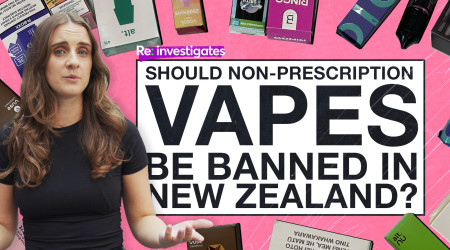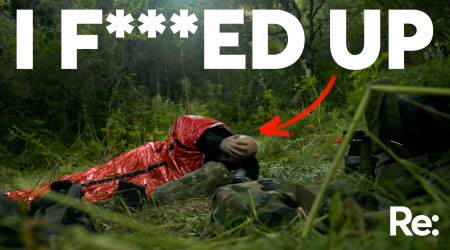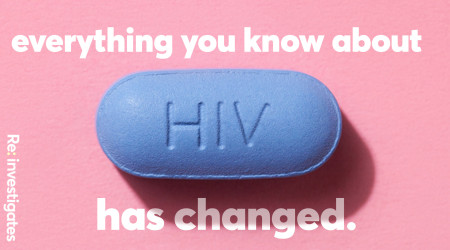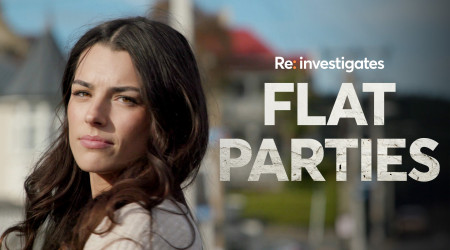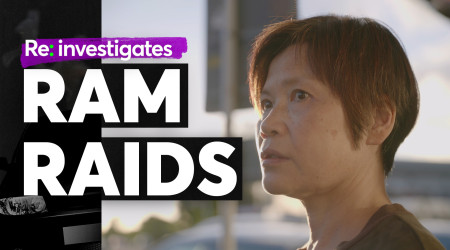Vapes are prescription-only in Australia. Should NZ do the same?
Vaping was supposed to stop people from smoking. But instead, it's gotten a new generation hooked on nicotine. And now there’s no simple answer on how to control it.
Australia’s solution has been to ban vapes, unless you have a prescription.
But is that working - and should Aotearoa do the same? Or could that just create more problems?
When you drive down Karangahape Road in Auckland, how many shops do you pass that sell vapes?
Initially, I guessed about eight. I knew there were the big chains and maybe a few extras.
But as I ducked my head into each dairy, alcohol store and smoke shop, I counted 15 shops that sell vapes.
That’s right, 15. On one stretch of road.

Re: News’ new documentary investigates youth vaping in Aotearoa and Australia. Photo: Re: News.
Vaping is everywhere
Teenage smoking in New Zealand has dropped massively over the last 20 years - only around 1% of Year 10s smoke, according to Action for Smokefree’s Snapshot Survey in 2023.
But now, 10% of Year 10s vape every day.
And 16.4% are regular users - meaning they vape either daily, weekly, or monthly.

Alia Polon says she vapes to help cope with her stress. Photo: Re: News
Alia Polon, 18, first started vaping when she was 14.
Never having been a smoker, she says she didn’t know the feeling of addiction until she lost her vape.
“Back when I was really addicted, it was due to stress. That's how I would cope,” she says.
“My cravings were so strong and I knew I could easily access a new vape. So holding back was really difficult. If I tried to quit now, I think I would definitely go back to vaping.”
New Zealand’s vaping rules
Aotearoa has tried to clamp down on youth vaping - in 2023 new rules meant all vapes need to have batteries you can remove and child safety mechanisms.
Enticing flavour names are outlawed and the amount of nicotine disposable vapes can have has been cut in half.
New vape shops also can’t be within 300 metres of schools and marae. But existing ones, of which there are more than 600, can stay put.
More recently, the government announced in March 2024 it will completely ban disposable vapes and increase fines for shops that sell vapes and cigarettes to minors.
From 1 October 2024, retailers, distributors, New Zealand manufacturers and importers must only sell reusable vaping products that contain removable batteries.
The new laws have been criticised for not going far enough. But would a tougher approach even work?
Australia’s prescription-only model
Australia has some of the toughest vaping laws in the world. Since 2021, it’s been illegal to import or sell nicotine vapes without a prescription.
The only trouble was, some shops and manufacturers were simply disguising nicotine vapes as non-nicotine - and selling them despite the ban.

Emily Jenkinson from Cancer Council New South Wales says “there's absolutely no benefit for a young person to be vaping at all”. Photo: Re: News.
Emily Jenkinson from Cancer Council New South Wales says while they did have “sound policy” loopholes were being exploited by the vaping industry.
So since March this year, all vapes - even ones you can recharge or ones without nicotine - are banned unless you are a pharmacy with an import licence.
This means any vaping product that’s not in a pharmacy will be seized.
“Australia is coming out really strong on vaping because we don't want to make those irreconcilable public health healthcare errors like we did with cigarettes,” Jenkinson says. “We're confident the changes will work and that we'll see a massive reduction in vaping.
“New Zealand could take a lot of learnings from Australia's approach,” she says.
But is their approach working?
Their youth vaping rates are still going up despite the ban.
The year the first ban kicked in, the amount of 14 to 17-year-olds who vaped went from 2.1% to 9.8%.
And Cancer Council Victoria data shows it has steadily increased each year since. Early data from 2023 shows youth vaping is now at 14.5%.

Rise in vaping for 14-17 year olds in Australia. Source: Cancer Council Victoria.
And you can still buy vapes in Australia.
Macey, a 25-year-old New Zealander living in Melbourne, says even though vapes are becoming harder to find, the ban is “still not working”.
Macey wanted to remain anonymous in this story to protect her privacy.
“People are still vaping heaps but the difference is the smoke shops now have them hidden behind a cabinet, like how cigarettes are stored, and the vapes don’t show nicotine percentages.
“[Shops] will also sometimes say no to selling to you if they think you’re a risk. But I can still get one just across the street.”
Macey says she has noticed the prescription-only model has meant the price of vapes has increased.
“It’s becoming more inaccessible price-wise like cigarettes,” she says. “At my shop it’s like $30 cash or $35 card for a vape and they used to be $20.
“But anyone who isn’t vaping is smoking so many cigarettes. People aren’t going to stop, I can’t see it happening.”
The rise in smoking in Australia

Director of ASH, an organisation campaigning to reach NZ’s 2025 smoke-free goal, Ben Youdan, says Australia’s policy means smoking rates will continue to stay high there.
Director of ASH Ben Youdan says the prescription-only model isn’t the answer for New Zealand. Photo: Re: News.
“I think Australia is going to cause a great deal of harm with their policy,” he says. “Australia is still allowing cigarettes to be sold absolutely everywhere.
“If you create an environment where it becomes much, much harder to access the less harmful product but leave the most harmful legitimately on sale absolutely everywhere, it's an absolute recipe for smoking rates to continue to stay high.”
And smoking does seem to be on the rise in Australia.
The number of 14 to 17-year-olds smoking has tripled there since 2019 - and early data from 2023 shows it could double again.

Rise in smoking for 14-17 year olds in Australia. Source: Cancer Council Victoria.
The gateway effect of smoking and vaping
Emily Jenkinson from Cancer Council New South Wales says the rise in smoking in Australia is due to the “gateway effect” of vaping.
Some research shows young people who have never smoked are taking up vaping and then being introduced to cigarette smoking - sometimes using both at the same time.
“Young people who vape are then three times as likely to go on to smoke cigarettes,” she says.
But not everyone agrees vaping is a gateway to smoking.
Ben Youdan from ASH says there isn’t evidence of a gateway effect in the United States, Canada, the United Kingdom or New Zealand, because in all of those countries there has been a steady decline in youth smoking.
For example, youth smoking rates have continued to stay at a record low in New Zealand with 1.2% of 14 and 15-year-olds smoking daily, and 2.6% smoking regularly.
Similar trends have been found in the United States, Canada and the United Kingdom.
“Australia is quite unique in that they've created this perfect storm to favour cigarette smoking over vaping,” Youdan says.
Jenkinson denies the prescription-only model and making vapes harder to access will create more smokers.
“I think that restricting it to the prescription model means that people who smoke still have that avenue that's still legal and legitimate,” she says.
“We've learned a lot from cigarettes. We allowed cigarettes to be sold in a free market and then decades later we understood that they caused cancer, they caused heart failures. With vaping we are at a much earlier point, we know we can get rid of them now. So that's the difference.”
The vape black market
One of the biggest critiques of Australia’s prescription-only model is that it has triggered a booming black market for vapes.
Jenkinson says the black market argument is “constantly peddled by pro-vaping lobbyists”.
“But in reality, we already have a black market and that's actually why the reforms are coming in,” she says.
“We're essentially going to turn off the tap of the supply of illegal vaping products.”
But is a black market that easy to just turn off?
In February 2024, health authorities seized 30,000 illegal vapes and tobacco products worth $1.1 million from Sydney retailers.
And there have been more than 40 firebombings of stores selling tobacco and vapes across Victoria.
Authorities estimate the size of the illicit vape market could be worth up to $500 million in the state of Victoria alone.
In New Zealand, a black market for vapes already exists - despite us having more than 1000 vape shops across the country.
Apps like Snapchat and Discord are being used to illegally buy and sell vapes and juices, either for cheap prices or for juices that are higher than the legal limit.

Photo of vapes being sold on Discord. Photo: Re: News.
The government and Ministry of Health’s response
New Zealand had planned to make it illegal for anyone born after 2009 to ever purchase tobacco.
But the coalition government repealed the ban in 2023 saying it was “unproven”.
Instead of “smoke-free”, they want to get our smoking rates, which are currently at 6.8%, to less than 5%.

10% of Year 10s now vape every day, according to ASH. Photo: Re: News.
The health minister has said vaping is the “prime tool” for helping people quit smoking, so there are “no plans” to follow Australia and make vapes prescription only.
A Ministry of Health spokesperson told Re: News, “There are currently no plans to restrict vapes to prescription-only, which would require a legislative change. The Ministry of Health has not been asked to provide advice on this matter, and it has not been included as a policy in the Government’s coalition agreements.”
They said vaping products have “changed the possibilities for New Zealanders” who smoke or want to quit smoking, providing a more cost-effective, less harmful alternative.
“There has been a reduction in smoking rates, and the availability of vaping is part of the reason for the reduction in smoking rates. Overall, the daily smoking rate in New Zealand is now 6.8%, a big drop from 14.5% about seven years ago.”
But they said the best thing people can do is “be vape free and smokefree”, and people should look to stop vaping once they’re confident they won’t start smoking again.
They said the ministry considers the risk of an illicit market in vape products to be low.
“The Ministry of Health regularly receives complaints alleging illegal sales by individual retailers. The reasons for these complaints vary, and include selling products that don’t meet the new regulations, sales to minors and general retailers selling flavours they are not permitted to… The Vaping Regulatory Authority and the National Public Health Service investigate complaints and follow up with retailers where a breach is identified.”
Re: News requested comment from the Vaping Industry Association of New Zealand, but it did not respond.
The health impacts
Guarding vapes behind a doctor’s prescription could hurt low-income people the most, ASH Director Ben Youdan says.
The latest reforms mean Aussies could pay up to $150 for a single vape if they get it through a doctor's prescription.
Their government expects nearly half a million Australians will want prescriptions, needing an extra one million doctor's appointments each year - in an already overwhelmed health system with long wait times.
And New Zealand will be no different. With a “crisis” like shortage of GPs around the country, it’s already incredibly hard for many to get an appointment, let alone afford one.
People living in deprived neighbourhoods - who are 3.5 times more likely to smoke - will likely buy their vapes elsewhere or continue to smoke.
“Most smoking now is within lower socioeconomic groups,” Youdan says.
“Those populations have the lowest access to health care, massively under prescribed drugs that they already need. So suddenly you're putting something that stands to benefit the populations who smoke into a system which is inherently inequitable, blighted with systemic inequity. It's just building a system which is totally unfair.
We don't know the long-term health impacts of vaping yet, but research so far indicates it is much less deadly than smoking. But vaping is still harmful.
Research has found it irritates the lungs and worsens asthma. Vaping can also raise your blood pressure, heart rate and can alter your heart’s function.
New research has also found vaping causes similar changes to the DNA of the cells lining your cheeks as smoking does. These cheek cell changes are linked to smokers developing lung cancer later in life.
What do young people think?

Young people say they are more likely to smoke or get a vape on the black market if vapes were to become prescription-only in New Zealand. Photo: Re: News.
In the video, we went to Karangahape Road in Auckland on a Friday night to ask vapers what they would do if vapes became prescription-only in New Zealand.
Nearly every person we asked said they would either start or go back to smoking, or they would buy a vape on the black market instead of getting one from their doctor.
“If they were to become illegal I would do everything in my power to get one. I don’t think I’d really give a shit,” one person said.
“If you have to get a vape through your doctor, I probably would go for the nicotine gum or the nicotine mints, but on a night out those don't hit the sweet spot. So yeah I’d probably smoke over trying to get a vape,” said another person.
We need to educate young people about vaping
With 10% of Year 10s now vaping every day, it’s clear the cat is well and truly out of the bag - and no matter what we do, there will inevitably be consequences.
If we follow in Australia’s footsteps, a black market in New Zealand could explode, like it has over there.
And instead of going through the hassle of getting a prescription, some people might just turn to smoking instead.
But if we don’t do enough, we could see a repeat of what happened with cigarettes - and in 20 years time we will know more about the long-term health impacts of vaping and might wonder how we allowed vapes to be sold so freely.
I think the most important thing we can do right now is educate young people about vaping so they can make an informed choice on their own.
Seeing how the prescription-only model panned out in Australia makes it clear to me that if people want to vape, they will find a way regardless of what bans and legislation are in place. So people need to be educated to make this decision themselves.
Unique window of opportunity
Emily Jenkinson from Cancer Council New South Wales says there is a unique window of opportunity to do something about vaping now.
“We've got to implement these reforms. We've got to demonstrate to young people that we're taking this seriously,” she says.

Alia Polon says the only way she could see herself quitting vaping is if she could no longer afford it. Photo: Re: News.
“We don't want to just use them as a little guinea pig generation.”
On the other hand, ASH’s Ben Youdan is worried how vaping is being treated as much more serious than other things young people experiment with.
“It massively stigmatises the behaviour but doesn't really understand why they're doing it in the first place, including ‘I'm using it for the fact that I feel stressed or anxious,” he says.
“If we're not looking at it holistically around overall wellbeing and what's happening in the communities kids live in, we're going to fail.”
More stories:
Anger and outrage: students to rally against government climate approach
20 protests are planned across New Zealand for Friday April 5.
Painful periods aren’t normal. This myth delayed my endometriosis diagnosis
“It’s just terrible how [the health sector] doesn’t really take women’s pain seriously.”
This film is the most realistic portrayal of sexual violence I’ve seen
Five things I took away from watching How To Have Sex.

